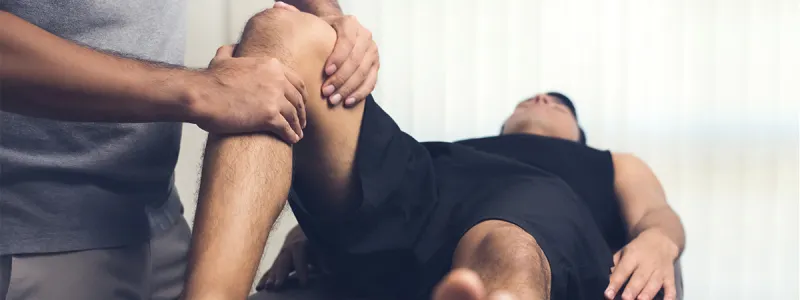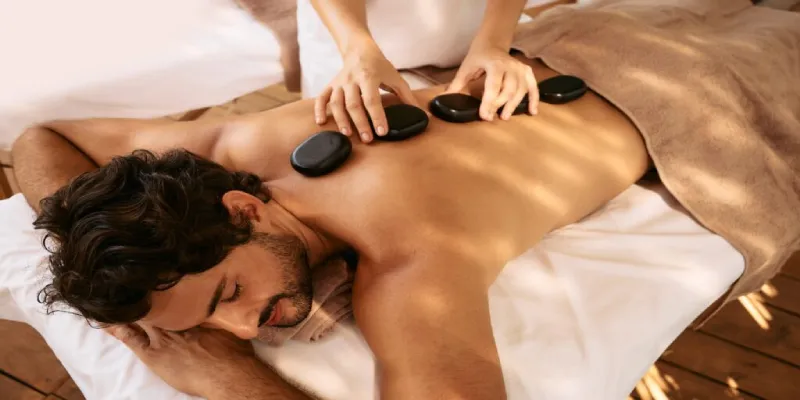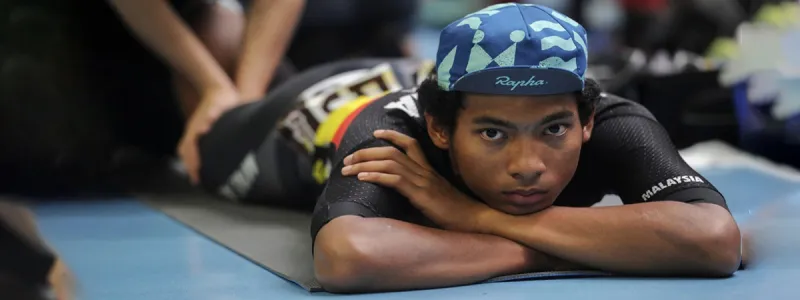You can have knotted muscles and aching joints after long, challenging rides. Massages remove toxins from the body, loosen tight spots, accelerate recovery, and prevent injury.
Don’t be shy about your glutes. Tell the massage therapist to concentrate on your lower body. Clawson says many American therapists don’t know how to work on glutes. In such a case, they can use the drape or sheet to work on the muscles necessary for cycling.
We’ll discuss how to prepare for a cycling-specific massage, what to expect during the procedure, who can perform it, and how to properly care for your muscles afterward.
How to Get a Cycling-Specific Massage: 27 Steps [Easy DIY]

A cycling-specific massage can help alleviate discomfort, but preparation is key to maximizing the benefits. We will discuss the pre-massage steps, clothing, and the necessary equipment.
Pre-massage steps to take
Before heading to a cycling-specific massage, taking pre-massage steps is essential to ensure you’ll get the most out of the experience. Here are some tips you can follow:
- Hydrate: Drink enough water before the massage to keep yourself hydrated. This will help your muscles relax and make them more receptive to the massage.
- Stretch: Do stretching before the massage to improve your flexibility and loosen up your muscles.
- Fuel up: Eat a light meal a few hours before the massage to avoid discomfort during the session.
What To Wear To The Massage?
The attire you choose for your massage matters. Dressing appropriately can ensure you’re comfortable throughout the session.
- Loose clothing: Wear comfortable, loose clothing that allows easy access to the areas that need to be massaged.
- Remove jewelry: Take off any jewelry that may get in the way of the massage or distract your masseuse.
Necessary equipment for the massage
Having the right equipment can help enhance your massage experience. Here are some essential items you should bring:
- Cycling apparel: Wear your cycling outfit or bring it to the massage. This will help your masseuse understand the muscle groups that need attention most.
- Towels: Bring one or two large towels to cover your body and keep you warm during the massage.
- Water bottle: Staying hydrated during the massage is critical to minimizing soreness post-massage.
Get a Cycling-Specific Massage: Procedure

When it comes to cycling, taking care of your body is crucial to performing at your best. One way to keep your body in check is by getting a cycling-specific massage, which targets the specific muscles and areas used and affected during cycling. We will delve into the procedure of cycling-specific massages, the regions of the body targeted, and the techniques used during the massage.
Step-by-Step Guide to a Cycling-Specific Massage
- Consultation: You will typically consult a cyclist massage therapist before the massage. This is where you can discuss any concerns or areas of the body that are particularly bothersome or tight.
- Preparation: You will be asked to lie on a massage table, typically with a sheet or towel, to cover your modesty. The therapist will then work on applying the appropriate pressure and techniques for targeting the muscles used in cycling.
- Full-Body Massage: A cycling-specific massage will involve a full-body massage. The therapist will work on the muscles of the legs, back, arms, and shoulder.
- Focus Areas: The therapist will pay extra attention to the areas most affected during cycling, such as the neck, lower back, and hips.
- Stretches: Various stretches may be incorporated into the massage to increase flexibility.
- Post-Massage: After the massage, drink plenty of water to help flush toxins out of your body. You may also want to perform some light stretches to aid muscle recovery further.
Areas of the Body Targeted During a Cycling-Specific Massage
- Legs: The muscles of the legs are continually used and stressed during cycling. A cycling-specific massage will target these muscles, including the hamstrings, quads, and calves.
- Lower Back: The lower back is another area heavily targeted during cycling. Tight muscles in this area can affect your posture and contribute to back pain.
- Hips: The hips play a crucial role in cycling by providing power and stability. Massages tailored to cyclists will target the hip flexors, glutes, and hip rotators.
- Shoulders and Arms: Although not the primary moving muscles in cycling, the shoulders and arms contribute to posture issues and discomfort after long rides.
Techniques Used During a Cycling-Specific Massage

- Deep Tissue Massage: This technique targets the deep layers of muscle tissue and fascia to break up adhesions and knots that can cause pain and tightness.
- Swedish Massage: A form of therapeutic massage, Swedish massage uses long strokes, kneading, and circular movements to promote relaxation and stimulate blood flow.
- Trigger Point Therapy: This technique presses around trigger points to alleviate pain.
- Myofascial Release: Myofascial release involves applying gentle pressure to the fascia, the outer layer of muscle tissue, to help improve the range of motion and decrease pain.
Massage for Cyclists: AfterCare
It is important to note that your post-massage aftercare plays a crucial role in maximizing the benefits of your massage. We will discuss some tips for muscle recovery after a cycling-specific massage.
- Hydrate: Drinking plenty of water after your massage can help eliminate the toxins released and rehydrate your muscles.
- Stretch: Adding some simple bits to your post-massage routine can further aid muscle recovery by promoting circulation and increasing flexibility.
- Rest: Resting after your massage allows your muscles to heal and rebuild. Take a day or two off from exercising after your massage.
- Ice or Heat: Depending on your therapist’s recommendations and personal preferences, ice or heat therapy can help reduce inflammation and promote healing.
- Self-Massage: Performing self-massage techniques or using a foam roller can continue to release tension and promote muscle recovery.
Conclusion
Getting a cycling-specific massage can be incredibly revitalizing and uplifting for your mind, body, and overall well-being. It is an excellent way to replenish your muscles after a strenuous ride and prepare for future endeavors.
While the benefits of post-cycling massages are numerous, knowing how to prepare and what to expect during and after the massage is essential to ensure you get the most out of your session.
Following the steps outlined in this post, equipping yourself with the necessary equipment, and considering the safety precautions, you can get the ultimate cycling-specific massage tailored to your needs. So go ahead and book that appointment, revel in the following relaxation, and enjoy your next ride with renewed vigor.
FAQs
When Should A Cyclist Get A Massage?
Massage is recommended once every 2 to 4 weeks for recreational cyclists to maintain muscle health and relaxation. A massage every 1 to 2 weeks can support faster recovery for competitive cyclists who push themselves harder and engage in frequent intense workouts.
Is A Massage Better Before or After A Bike Ride?
Consider taking a leisurely ride 1-2 days before the heavy passage, followed by a light self-massage to promote blood flow and remove waste. After a hard ride, you’ll have sore muscles, so get a massage within two days.
Do You Know What A Bicycle Massage Is?
A bicycle massage is a type of massage therapy tailored for cyclists. It helps prepare the body for cycling, prevent injuries, aid in recovery post-rides, and improve performance. Cycling benefits from deep tissue massages, relaxation massages, improved circulation, and trouble spots that reduce injury risk and improve performance.
Professional and amateur cyclists can both gain from incorporating regular bicycle massages into their training routine.
What Is The Aftercare For Deep Tissue Massage?
The aftercare for deep tissue massage involves drinking water to flush out toxins released during the massage, which can reduce post-massage side effects like soreness and nausea. Maintaining hydration levels and eating well is also vital to supporting recovery and maximizing the benefits of the massage.


